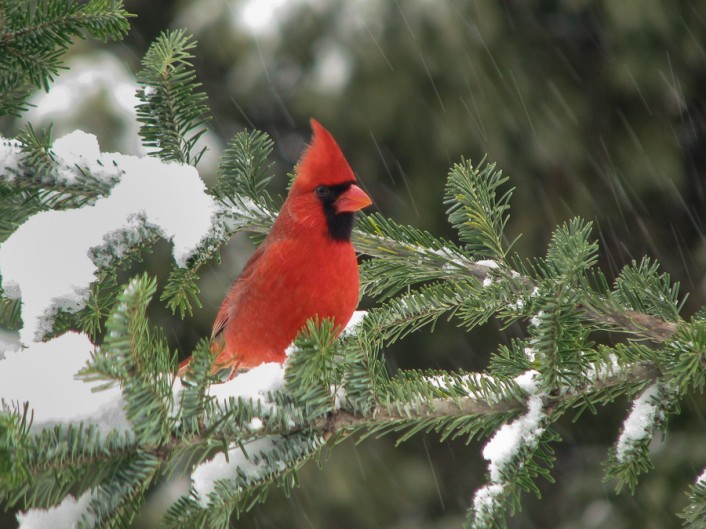When asked what he owed his great success to, Lord Nelson replied, “…being fifteen minutes early!” I have always believed in that axiom and make sure that I am punctual.
By David A. Homer
There are some however, who are so far ahead out of the starter blocks that it makes one wonder…. We got our first Christmas card in late November! Goodness gracious it was just Halloween, and the American Thanksgiving!
In spite of being very early, the card was much appreciated for three reasons. It was a warm and gracious greeting from dear friends; the card had been purchased from the Couchiching Conservancy, so any profits went to a great cause; and the adorned image was of a Northern Cardinal taken by one of our special friends, Orillia Wildlife Photographer Arni Stinnissen. The Conservancy offers wonderful wildlife greeting cards every year, the Cardinal card was offered in 2011. Mammals are the theme of this year’s cards, and there is still time left to purchase and mail them.
I’m not a betting person, but I can almost guarantee that this will not be the only card we receive this year with an image of a Northern Cardinal embedded somewhere on the card. Many millions of greeting cards are produced each year, and thousands of them have images of three birds in particular: Cardinals, Chickadees and Doves! All of which are favourites of mine! But you must understand, being a birder, most any bird is a favourite of mine, and anyone who sends us a card knows that!
Seven American States have claimed the Northern Cardinal as, State Bird! Many sports teams have been named after it, producing some creative logos; images of cardinals appear on just about anything that can be sold! The bird is a marketer’s dream!
Named after the scarlet vestments worn by Cardinals in the Roman Catholic Church, we live in the Northern Cardinal’s northerly range. Few of these beauties are found much north of here. I remember even in the Toronto area when they were very scarce, as they are primarily a Southern bird. Today, Cardinals are fairly common birds in Southern and South Central Ontario.
Climate change as well as loss of habitat in the south is perhaps partly responsible for this gradual movement north, but most research indicates that the availability of food year-round is the greatest factor in the push north. With more than one-third of the population now feeding birds during the winter, there is good reason to go where the food is.
Cardinals are not migratory. They stay in much the same location year round. Most remain paired throughout the winter, foraging in small flocks.
The male is extremely territorial come nesting season. While walking to my office from the parking lot at York University every spring morning for years, I would whistle-call a male cardinal. He would come out from within the woodlot by the path and follow me quite a distance to the building entrance without fail. The same bird would come to one of our office windows, and seeing his reflection, would attack it for minutes on end.
Cardinals are one of the earliest songbirds to nest in the spring. Females do most of the nest building primarily in dense shrubs and will lay two to five eggs. The male will feed the female while she incubates the eggs which will hatch in about 12 days, and then bring the chicks insects as seeds are not part of their diet until they leave the nest about two weeks after hatching. Second broods are frequent.
Cardinals are primarily ground feeders, but take seeds from platform feeders. Favourite foods are black oil sunflower and safflower seeds, peanuts, and fruits. They are easily attracted to home feeders, especially if water is available and there is nearby cover, particularly dense evergreens.
Next time you are out for a walk, listen for “what cheer…what cheer…what cheer…birdie…birdie…birdie.” Look up, Big Red may be watching you!
David A. Homer is a board member and volunteer with the Couchiching Conservancy which currently helps protect more than 10,000 acres of natural land.

